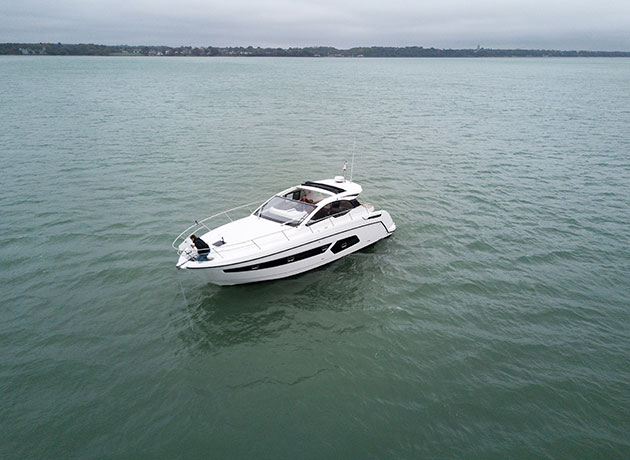One of the trickier manoeuvres you may encounter, we take you through the process step-by-step to nail it every time
Rafting up to a stranger’s boat on a busy visitors’ berth is one of those moments that fills newcomers with trepidation.
Not only is it a very public test of your boat-handling skills but you know that whatever the outcome, you are going to spend the next few hours shackled in close proximity to the very person’s boat you have just been using as a giant boat fender.
When done well, it can lead to an impromptu drinks party with your new rafting buddies. When done badly, it can make for a very frosty evening trying to avoid each other’s gazes. The good news is that it’s not hard to do, but it does require some preparation.
Your first step should be a drive-by, looking for a similar-sized motor boat to raft up to, simply because its shape and dimensions mean it’s likely to be a better fit than a sailing yacht.
Having chosen your target boat, fender placement is crucial. This normally means setting the fenders at gunwale height, where the rubbing strake covers the join between the hull and superstructure. I aim to have 10cm of fender above the gunwale and the rest below, but take care not to position them over big hull windows, which may not be designed to take the weight.

VIDEO: How To – Leave a windy berth
One of the most daunting manoeuvres a motorboater can face – learn the best way to deal with leaving a

VIDEO: How To – Tie up your boat
The definitive guide on how to tie up your boat correctly

VIDEO: How To – Set Your Anchor
We guide you through the best techniques to ensure you are anchored safely and securely
At the stern, I like to use a good-sized ball fender whilst coming alongside, before swapping it for something smaller once berthed. The berthing manoeuvre itself is made easier if your new neighbours are aboard to help with lines. If they aren’t, then always try to berth against the wind or tide so that you can use them to control your speed as you come alongside.
Once you touch, get the ‘up’ elements line on first so that you don’t start slipping back. Try to do this from your boat so that if you need to pull away, you don’t leave a crew member on the wrong boat.
Once you’ve got the upwind line attached then you can step on to your neighbour’s boat and attach a line at the other end before adding springs to stop any further movement. It’s quite normal to spend a good few moments adjusting the lines so that you can get on and off your neighbour’s boat.
Traditional yachting etiquette says you should try to go over the foredeck when stepping on to your neighbour’s boat but in practice, modern boats with large bathing platforms mean that most people are happy for you to cross from stern to stern.
Finally, once secure with springs on, it’s helpful to rig a pair of long lines to the shore so that your neighbour isn’t taking the full weight of your boat. They need to be tight enough to be doing something but not so tight that they are pinning your neighbour to the shore in a vice-like squeeze.
Leaving is a reversal of the process, making sure your last line is a slipline that can be released from your own boat before working your way out parallel to the raft.





















